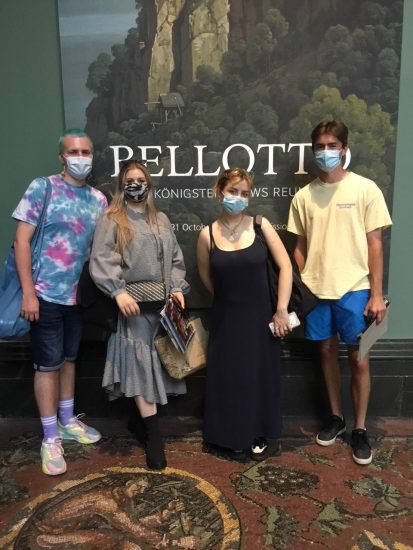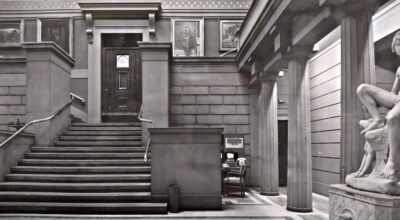I thought you’d like the latest about our forthcoming Bellotto exhibition – so here’s a glimpse behind the scenes.
Bellotto: Views on a Fortress has been in the pipeline for a while. The National Gallery in London, our co-organisers, were generous enough to suggest that Manchester had the first showing, and we were to reveal Bellotto’s glorious set of five paintings to you in February 2021. Plans changed due to the pandemic and the National Gallery launched Bellotto: The Königstein Views Reunited in July this year. Bellotto, the most innovative – painter in 18th-century Europe, painted a forbidding Saxon fortress from five different angles. In their reuniting of the five paintings the National Gallery emphasised the airy situation of the fortress with a spectacularly light and simple hang.
Here in Manchester we’ve taken a different approach. The city owns two of Bellotto’s five Königstein paintings, and they were on display here for years before joining the other views at the National Gallery this summer. Perhaps they have been – dare I say it? – under appreciated? Everyone looks out for Bellotto’s more famous uncle, Canaletto, and takes his talented nephew for granted. How, we wondered, could we do more? Just hanging the paintings side by side is not enough for Manchester. Enter der Zivilist collective.

We met the Zivilists as part of the Unit X work that we do with Manchester Metropolitan University. Unit X is a project with which the Art School like to mix it up a bit. It gives their students some experience of working in the real art world, so we at the Gallery benefit from their creative minds most spring terms. We chose to develop the Zivilist project from many presented to us by the Unit X students in May 2021. Our challenge to these emerging artists was – could they humanise Bellotto us in the 21st century?

Bellotto of course did humanise his own paintings. He was a dab hand at staffage (a word I enjoy employing in a northern accent) – that judicious sprinkling of people and animals that bring any scene to life. The Zivilist proposal, although the name means ‘the civilians’, did not particularly riff on the people in the paintings. Instead, they cleverly drew attention to a vexed issue: what makes value in a gallery setting? I won’t give the game away here, but let’s just say that some of the porcelain you’ll see in their display is not really Meissen. This was their other cunning idea: they’d done their research – and had discovered that Königstein fortress was used, over the centuries, as a prison. And who had been imprisoned there? Only Johann Friedrich Böttger, the European who first cracked the formula for producing desirable Chinese-style porcelain.
So although we are preserving our Bellotto purity by showing only four paintings in our exhibition (yes, unfortunately we’re only displaying four of the five), you may find that you hear things, and, in the adjoining gallery, see things, that take your mind on a journey from Bellotto to the present day, by way of Meissen porcelain and Königstein ‘merch’. Intrigued? See you on 20 November…
Hannah Williamson – Curator, Fine Art





